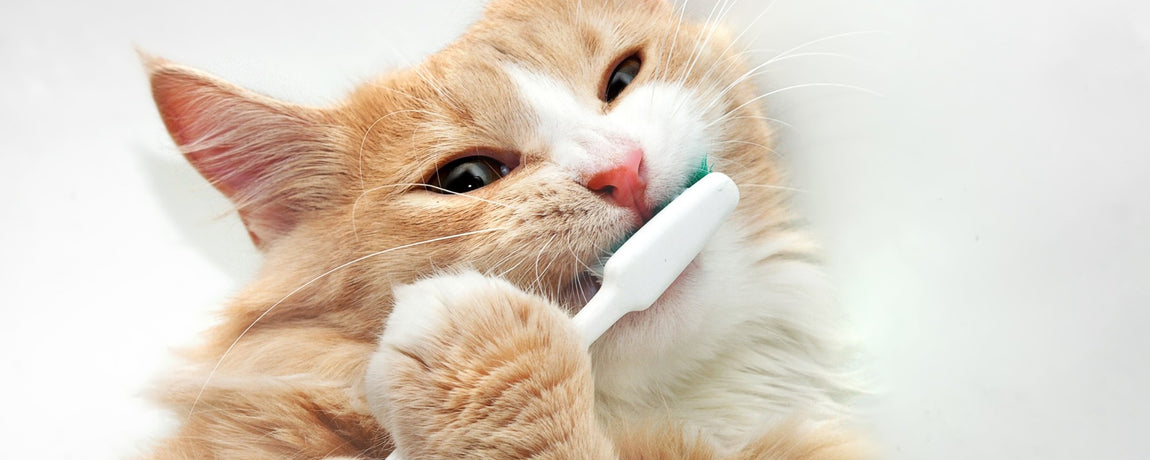- Dog/Cat toothpaste
- Finger or toothbrush
Take a look at our website for options:
https://dukeandcopetsupplies.com/search?type=product&q=toothpaste

- Start by introducing the toothpaste, dog/cat toothpaste is usually flavoured. Allow them to lick it off your finger and see if they will allow you to dab a small amount onto a few teeth at the side. Licking it off is a great start!
- Continue dabbing toothpaste onto your pet's teeth with your finger, make this part of your daily routine. It's easiest to begin with the premolars (side teeth nearer the front).
- Introduce the tooth or finger brush. Apply a small amount of toothpaste to the brush and allow your pet to lick it off.
- Begin dabbing toothpaste onto your pet's teeth using the toothbrush.
- Then you can begin using the toothbrush properly, progressively working your way to other teeth.

- If your pet shows any signs of being unsure, go back a step.
- Always start your next session at the step your pet was previously comfortable with.
- Don't use human toothpaste! It doesn't taste nice for them and can be toxic.
- Don't rush!!
If you are really struggling to brush your pet's teeth there are a few other products on the market to help:
https://dukeandcopetsupplies.com/search?type=product&q=dental
When to see a Vet:
- Any new discolouration of the teeth. Damage to blood supply can kill the tooth, making it more susceptible to damage and infection.
- A growing amount of tartar. Tartar is a hard accumulation of bacteria. It can cause significant damage to gums and teeth over a prolonged time.
- Gum damage or recession. The gums are an important indicator of dental health, any damage, inflammation or recession may need investigating.
- Changes to your pet's eating habits. Dental problems can be very painful, pets may eat on one side, avoid harder foods or stop eating completely if it is bad enough.
The vet will assess your pet's dental health and may recommend a dental under general anaesthetic to allow full assessment and treatment as appropriate. It's important these procedures are done under general anaesthetic as full assessment and correct scaling and polishing cannot be performed in conscious pets.

Ellie Phipps BVSc MRCVS
